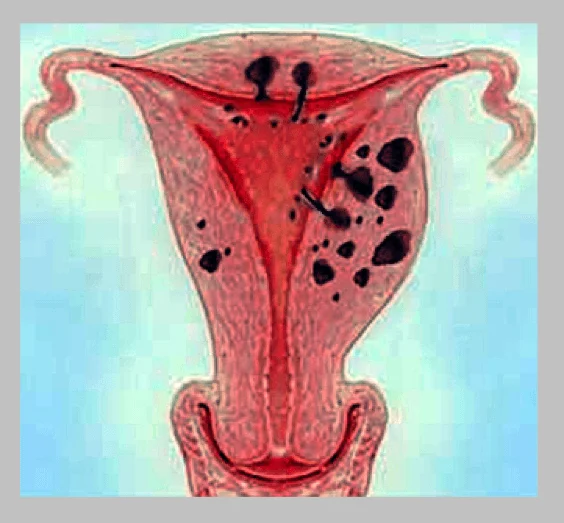Case Scenario 2
A 39-year-old G4P4 comes to the clinic complaining of increasing menorrhagia, dysmenorrhea, and an enlarging uterus. On physical exam, the uterus is 14 weeks in size, boggy, slightly tender, and mobile. What would be the next best step in management? adenomyosis
Definition
Ectopic endometrial glands and stroma are found within the myometrium Z, resulting in a symmetrically enlarged and globular uterus.
- Usually in multiparous women in their 30s to 50s Rare in nulliparous women.

Signs and Symptoms
Common
- Pelvic pain (usually noncyclical).
-
Symmetrical uterine enlargement.
-
Dysmenorrhea that progresses with duration of disease → pt is always complaining of abdominal and Back pain Z Dysmenorrhea in adenomyosis doesn’t occur as cyclically as it does in endometriosis.
-
Menorrhagia: 50% of women are asymptomatic.
-
Diagnosis Z
- suggestive ultrasound or MRI can be used to differentiate between adenomyosis and uterine fibroids.
- Definite diagnosis is usually confirmed after histologic examination of the hysterectomy specimen.
Treatment Z
- No proven medical therapy for treatment.
- GnRH agonist, NSAIDs, and OCPs may be used for pain and bleeding.
- Hysterectomy: Definitive therapy if childbearing is complete.
Adenomyosis Versus Endometriosis
-
Adenomyosis:
- Found in older, multiparous women.
- Tissue is not as responsive to hormonal stimulation.
- Noncyclical pain.
-
Endometriosis:
- Found in young, nulliparous women.
- Tissue is responsive to hormonal stimulation.
- Cyclical pain.
Practice Question
- A 35 year old woman presents with complaints of dysmenorrhea, dyspareunia and also is unable to become pregnant with her husband for 13 months now. What is the most likely reason for her complaints?
- a) Pelvic inflammatory disease
- b) Uterine fibroids
- c) Ovarian cysts
- d) Endometriosis